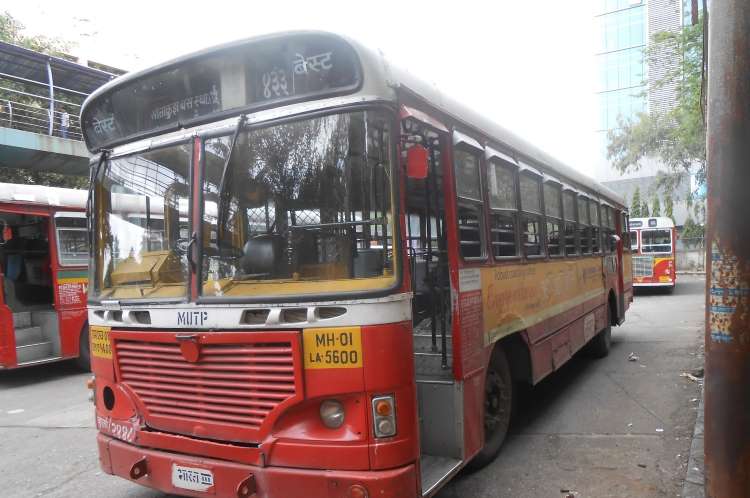
Fighting climate change demands cleaner transportation. Developing nations like India struggle with pollution from growing traffic, especially from diesel buses. Replacing them with new electric buses is expensive. Here, retrofitting existing buses with electric parts emerges as a promising solution. This approach, which involves replacing the engine of the existing bus body with electric components, is both faster and cheaper than buying entirely new vehicles.
Retrofitting reduces pollution and extends the bus’s life. Additionally, retrofitting doesn’t require a huge upfront investment and boosts the domestic electric vehicle parts industry. This strategy can play a major role in India’s shift to sustainable transportation, potentially creating new businesses and jobs.
READ I Manufacturing sector: Will Budget 2024-25 deliver growth?
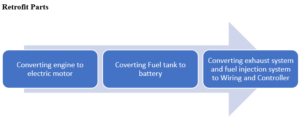
Retrofitting diesel buses
A study titled “Retrofitting of Inter-city Diesel Passenger Buses: An Economic Analysis and Policy Prescriptions” compared the lifetime cost per kilometer of three bus options in India: the Internal Combustion Engine (ICE) bus, the new electric bus, and retrofitted buses. The ICE bus is the standard diesel bus with a 15-year lifespan. The new electric bus is a brand new electric bus, also with a 15-year lifespan.
The retrofitted buses are existing diesel buses converted to electric, with an extended lifespan of either 7 or 10 years. The analysis assumes a bus travels 300 km daily, 28 days per month, and 336 days per year, resulting in an annual distance of 100,800 km for all bus types.
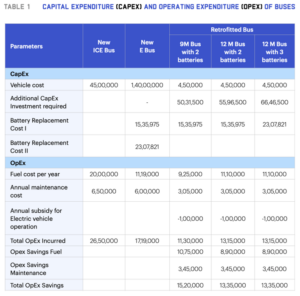
The results of the study show a clear advantage for retrofitted buses. The ICE bus is the most expensive option, exceeding Rs. 29 per kilometer. The new electric bus is slightly cheaper than the ICE bus, costing around Rs. 28 per kilometer. Retrofitted buses, however, are significantly cheaper than both, with costs ranging from Rs. 19 per kilometer for a 9-meter bus with a 7-year lifespan to slightly over Rs. 23 per kilometer for a 12-meter bus with three batteries and a 7-year lifespan.
Extending the lifespan of retrofitted buses to 10 years further improves the economics, with costs dropping to less than Rs. 15 per kilometer for a 9-meter bus and less than Rs. 19 per kilometer for a 12-meter bus with three batteries.
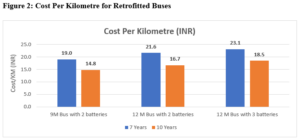
Retrofitting offers several advantages. First, it is cost-effective. Compared to buying entirely new electric vehicles, retrofitting is significantly cheaper. This is particularly important for developing nations like India, where the upfront costs of new electric buses can be prohibitive. Second, retrofitting allows for a faster transition to cleaner transportation. Converting existing buses is quicker than acquiring new ones, accelerating the shift towards a cleaner transportation system.
Third, retrofitting is resource-efficient. It extends the life of existing vehicles, reducing waste and the need for new bus production. This not only saves money but also helps conserve resources. Fourth, retrofitting reduces emissions. It eliminates harmful tailpipe emissions from diesel buses, leading to cleaner air, especially in urban areas. This has significant environmental benefits, including reducing air pollution and greenhouse gas emissions. Finally, retrofitting has economic benefits. It can decrease India’s dependence on crude oil imports, and the retrofitting industry has the potential to create millions of new “green jobs.”
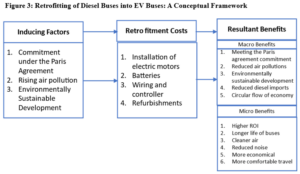
Despite its advantages, retrofitting faces some challenges. Long charging times, limited driving range, and insufficient charging infrastructure are technological hurdles that need to be addressed. Additionally, the upfront cost and potential need for vehicle redesign can be barriers for some operators. To overcome these challenges, the government and private sector need to invest in improving charging infrastructure and developing more efficient electric vehicle technology. Policymakers should also consider providing financial incentives to operators who choose to retrofit their buses.
Retrofitting diesel buses with electric motors and batteries offers a cost-effective and environmentally friendly way to modernize India’s public transportation system. It promotes cleaner air, potentially lower fares, and economic benefits. By addressing the challenges and investing in the necessary infrastructure, India can pave the way for a more sustainable transportation future.
